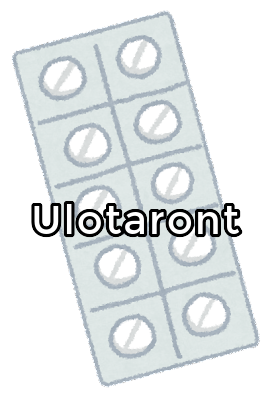Introduction
Ulotaront acts as a TAAR1 agonist and a 5HT1A receptor agonist.
I found a review article that describes the actions and effects of TAAR1 agonists, so I will try to extract some of them.
The original articles I wrote about Ulotaront are here. Part 1 is somewhat difficult. Part 2 is more recommended & important.
New Antipsychotics 3: Ulotaront Part2(Phase2 efficacy data)
New Antipsychotics 3: Ulotaront Part1(Side Effects, Phase, TAAR1)
Innovative Schizophrenia Drugs【Summary part 2】Ulotaront, etc.
Evidence from Human Clinical Trials
First, TAAR1 agonists may be highly effective for positive symptoms, as noted in the original article on Ulotaront. This has been shown in human clinical trials.
Their effects on negative symptoms have also been shown to be robustly ameliorative on measures such as PANSS-negative, UPSM-PANSS, MADRS, and BNSS. This was also shown in human clinical trials.
Safety is also excellent. They do not act as a dopamine D2 receptor antagonist (D2 blocker), so there are fewer side effects derived from D2 blockade. For example, extrapyramidal symptoms and hyperprolactinemia are rare, which are common with typical antipsychotics.
Also, side effects such as weight gain and diabetes are less common, which are common with atypical antipsychotics.
Evidence from animal studies
In experiments with rats, Ulotaront, a TAAR1 agonist, apparently prevented weight gain and enhanced efficacy when used in small doses with olanzapine.
This is noteworthy. Olanzapine is a very good drug except for the side effect of weight gain, and a meta-analysis shows that it is, in fact, the third most effective drug after clozapine and Sorian.
And olanzapine is also said to have a much higher degree of improvement in positive symptoms, negative symptoms, cognitive dysfunction, etc., when used over a long term. Olanzapine is a drug with a high final destination.
If a TAAR1 agonist such as Ulotaront could be added in small doses to prevent weight gain and enhance the effects of olanzapine, it would be a very good treatment option.
I do not know if it would be similarly effective in combination with antipsychotics other than olanzapine. For more information, I am planning to make an article about the co-treatment of existing drugs with TAAR1 agonists, so please see that article.
However, it has only been shown in experiments on rats, and I do not know if it has the same effect on humans. I will look at this closely in the future.
TAAR1 agonists have also been shown to improve cognitive function in a monkey experiment.
Furthermore, in experiments on rats and other animals, TAAR1 agonists were found to have antidepressant effects, anti-social anxiety disorder effects, cure drug addiction, promote daytime alertness, improve ADHD, and so on.
In addition, treatment-resistant schizophrenic patients have so far had to use clozapine, but Ulotaront and other drugs with TAAR1 agonist may also be effective for treatment-resistant patients.
Summary 1
- May be highly effective for positive and negative symptoms.
- Possibly less extrapyramidal symptoms, hyperprolactinemia, and weight gain.
- May be added to olanzapine in small doses to increase efficacy and prevent weight gain.
- May be effective in improving cognitive function.
- May work in treatment-resistant patients.
Long-term efficacy
In the LATUDA article, I found that the long-term efficacy of Ulotaront may be better than that of LATUDA.
Ulotaront reduced patients from an average PANSS total score of 101.4 to an average of 59.6 in about six months. It may be a significant reduction.
Ulotaront continued to improve negative symptoms over a longer period, as long as six months.

The long-term efficacy of Ulotaront seems to be high. Its effect on negative symptoms also seems promising.
Effect in Reducing REM Sleep
Ulotaront also seems to have the effect of decreasing REM sleep, although it is not known whether this is related to the efficacy of Ulotaront.
REM sleep is a shallow sleep in which “Rapid Eye Movements” are observed and dreaming occurs. Brain activity levels are high.
Conversely, non-REM sleep is a deeper sleep, in which the brain is resting.
During the night, a person alternates between REM and non-REM sleep in a 90~120 minute cycle and wakes up after 4 or 5 cycles.
Since the total sleep time does not change after administering Ulotaront, REM sleep is decreased and non-REM sleep is slightly increased.
The slow wave sleep that appears during non-REM sleep facilitates memory consolidation and some cognitive processes.
So it is said that Ulotaront increase non-REM sleep may have a therapeutic effect.
And while it does have that effect of deepening sleep, Ulotaront is also said to have the effect of promoting daytime arousal.
But on the other hand, a study has shown that 5% less REM sleep increases the risk of death from cardiovascular disease by 11% and from other causes by 19%.
Some say that REM sleep is also necessary for the brain, and the effect of reduced REM sleep may not simply be a good thing.

Ulotaront reduces REM sleep. A paper says it sounds like a good thing, but upon closer examination, I am not sure if the decrease in REM sleep is a good thing or not. I would like to take a closer look at the side effects in the future.
Development Status
Ulotaront is targeted for launch in 2024 in the U.S. and 2026 in Japan.
SEP-363856 (Ulotaront) was developed by Sumitomo Pharma and Sunovion, and in September 2021, a license agreement for co-development and co-marketing was signed with Otsuka Pharmaceuticals.
The drug is currently in Phase 3 development in the U.S. and Phase 3 in Japan.
In addition to schizophrenia, its use for other psychiatric disorders is also being considered.
Summary 2
- Long-term efficacy of Ulotaront may also be high. It is also expected to be effective for negative symptoms.
- Ulotaront has the effect of decreasing REM sleep. Whether this is a good or bad thing is unknown.
- Otsuka Pharmaceutical has joined the development of Ulotaront. In Japan, the drug is currently in Phase 3 development.
Comment
Once again, links to the original articles.
Part 1 is somewhat difficult. Part 2 is more recommended & important.
New Antipsychotics 3: Ulotaront Part1(Side Effects, Phase, TAAR1)
New Antipsychotics 3: Ulotaront Part2(Phase2 efficacy data)
Innovative Schizophrenia Drugs【Summary part 2】Ulotaront, etc.
Results of Phase 3 trials are now available.
【Ulotaront】U.S. Phase 3 Studies Failed. What’s Next? / Clinical Trial Data
[democracy id=”75″]References
- https://www.mdpi.com/1422-0067/22/24/13185/html
- https://adisinsight.springer.com/drugs/800036955
